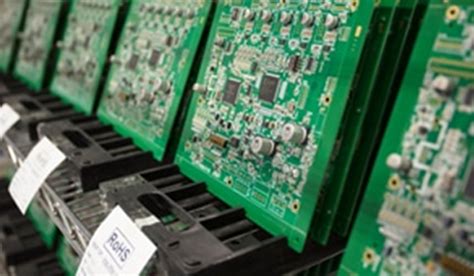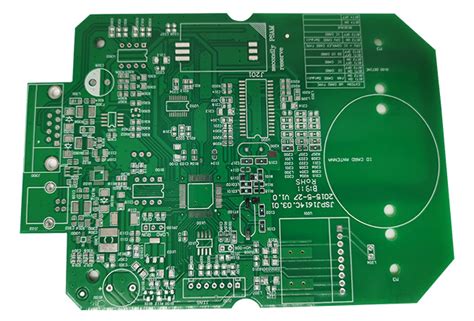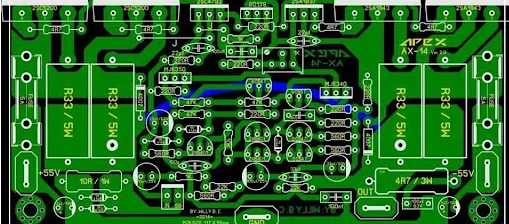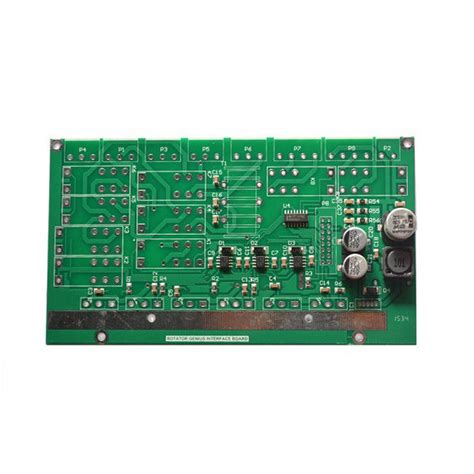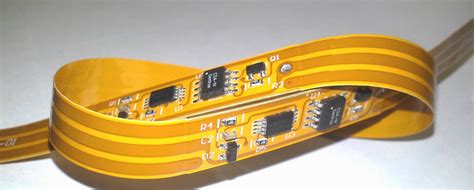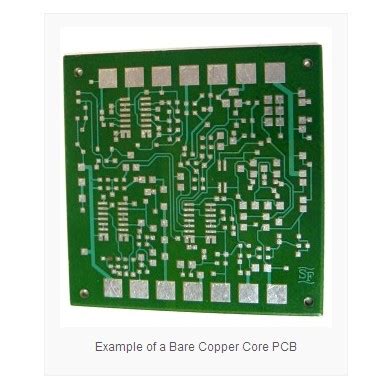Revolutionizing Circuit Card Manufacturing: A Comprehensive Guide
Key Takeaways
In the dynamic field of pcb manufacturing, understanding the nuances can remarkably enhance your approach to production. As you delve into the world of pcb manufacturing companies, it’s essential to evaluate how emerging techniques are reshaping the landscape. These innovations not only streamline processes but also contribute significantly to reducing the overall pcb manufacturing cost. Engaging with a prominent pcb manufacturing business can offer insights into effective methodologies and best practices that ensure high-quality output while maintaining efficiency. Furthermore, networking with industry leaders will provide you with a broader perspective on current trends and future predictions, ultimately aiding in your decision-making processes. By embracing these key takeaways, you can position yourself strategically within this competitive industry, ensuring that your operations are both innovative and cost-effective.
Revolutionizing Circuit Card Manufacturing: An Overview
In today’s rapidly evolving technology landscape, pcb manufacturing has emerged as a crucial element in the production of electronic devices. Understanding pcb manufacturing companies and the processes they employ is essential for anyone interested in diving into this industry. The landscape has changed significantly, with advancements in technology leading to impressive innovations that not only enhance quality but also reduce pcb manufacturing cost. Businesses involved in pcb manufacturing must adapt to these emerging techniques and best practices to stay competitive.
You should be aware of how these transformative methods can lead to increased efficiency and productivity, ultimately supporting your pcb manufacturing business goals. As you explore the various stages of circuit card production, consider engaging with industry experts and resources that provide in-depth insights into cutting-edge techniques.
“Investing in modern technologies and techniques can pave the way for significant improvements in production efficiency.”
By being informed about trends and updates within the industry, you position yourself strategically for success in this dynamic field. For more comprehensive insights on circuit card manufacturing techniques, consider visiting resources like Andwin PCB.
Emerging Techniques in Circuit Card Assembly
In the rapidly evolving world of pcb manufacturing, staying ahead means adapting to emerging techniques that streamline processes and enhance quality. One notable advancement in this field is the adoption of automated assembly systems, which significantly reduce human error and increase production speed. Many pcb manufacturing companies are investing in smart technology, integrating AI and machine learning to optimize workflows. These innovations help in identifying issues earlier in the manufacturing process, ultimately lowering the pcb manufacturing cost by minimizing waste and rework. Furthermore, 3D printing is gaining traction as it enables rapid prototyping and flexibility in design changes without incurring excessive costs. As you explore these techniques, consider how embracing cutting-edge technology not only improves your pcb manufacturing business but also positions you competitively in a market that demands efficiency and high-quality standards. By implementing these strategies, you can ensure your circuit card assembly processes are both modern and effective, showcasing your commitment to innovation while meeting client expectations efficiently.
Key Processes in Circuit Card Manufacturing
In the realm of pcb manufacturing, understanding the key processes involved is essential for enhancing both your production efficiency and product quality. The journey typically begins with the design phase, where engineers utilize software tools to create precise layouts. This critical step lays the foundation for what your pcb manufacturing companies will produce. Once the design is finalized, it is transferred to the fabrication phase, which involves several sub-processes including etching, laminating, and drilling holes to accommodate electronic components.
Following fabrication, the assembly phase comes into play. Here, components are carefully placed onto the circuit boards, often with automated pick-and-place machines that ensure accuracy and speed. This is a crucial process that directly influences overall pcb manufacturing cost since labor and time significantly impact expenditures. After assembly, thorough testing is conducted to ensure functionality and identify any defects—this not only safeguards your investment but also enhances customer satisfaction.
| Process | Description | Impact on Cost |
|---|---|---|
| Design | Creation of layouts using CAD software | Initial investment |
| Fabrication | Etching, drilling, and laminating boards | Materials and machine costs |
| Assembly | Placement of components using automated machines | Labor costs |
| Testing | Functionality checks for quality assurance | Potential rework costs |
Understanding these phases will empower you as you navigate through the complexities of starting a pcb manufacturing business or working with established firms. Each process plays a vital role in ensuring that your final product meets industry standards while keeping production costs manageable. By focusing on these key processes, you can better position yourself within this competitive landscape and leverage improvements in efficiency to drive better outcomes for your projects.
Best Practices for Quality Control in Circuit Card Production
Ensuring quality in pcb manufacturing is paramount to the success of your pcb manufacturing business. Implementing robust quality control measures can significantly impact the overall efficiency and effectiveness of circuit card production. Firstly, it’s crucial to establish a comprehensive quality management system that outlines the standards and procedures your team must follow. Frequent inspections during different stages of production can help identify any potential defects early on, minimizing costs in the long run. Additionally, utilizing advanced technologies such as automated inspection systems can enhance accuracy, reducing human error associated with manual checks.
Moreover, collaboration with reliable pcb manufacturing companies can lead to improved sourcing of materials, which is vital for maintaining quality standards. Regular training programs for your workforce on the latest techniques and industry standards will ensure that everyone is aligned and knowledgeable about the best practices in pcb manufacturing. Lastly, keeping a close eye on the pcb manufacturing cost allows you to strike a balance between high-quality production and economical efficiency. Ultimately, integrating these best practices into your circuit card production process will not only enhance the quality of your products but also strengthen your position in a competitive market.
Innovations Driving Efficiency in Circuit Card Manufacturing
In the ever-evolving landscape of pcb manufacturing, innovations play a pivotal role in enhancing efficiency and reducing costs. This industry is experiencing a surge of advancements that allow pcb manufacturing companies to optimize their operations. Among these innovations, automated production lines and advanced materials stand out as key contributors to increasing throughput while maintaining high standards of quality. By integrating sophisticated software solutions, manufacturers can streamline the design-to-production process, effectively reducing the pcb manufacturing cost and time-to-market for new products. Moreover, innovations such as real-time monitoring systems help you track the entire production cycle and identify potential issues before they escalate, ensuring that your pcb manufacturing business remains competitive. Embracing these technologies not only enhances operational efficiency but also fosters a culture of continuous improvement within the organization, equipping you to address the dynamic demands of the electronics market. Through these advancements, you can elevate your production capabilities and drive success in an increasingly demanding industry.
The Future of Circuit Card Manufacturing: Trends and Predictions
As you look toward the horizon of pcb manufacturing, several trends are poised to redefine the landscape of this essential sector. Advancements in technology are driving a shift toward more efficient processes, enabling pcb manufacturing companies to leverage automation and artificial intelligence. Automation not only reduces errors but also minimizes the overall pcb manufacturing cost, allowing for competitive pricing without sacrificing quality. The integration of Internet of Things (IoT) technology is another significant trend, fostering a more interconnected production environment where real-time data analytics can lead to rapid improvements in operations.
Moreover, sustainability is becoming a priority, as you may observe an increasing emphasis on eco-friendly practices within your pcb manufacturing business. This commitment involves the use of sustainable materials and the implementation of waste reduction strategies, which not only benefit the environment but can also enhance your corporate reputation in an eco-conscious market.
The future landscape will likely feature a greater focus on customization and flexibility, as customer demands become more specific and varied. The expansion of additive manufacturing techniques could allow for more intricate designs that cater to these unique requirements. As you navigate these evolving trends, staying informed will empower you to adapt and thrive in an industry that is constantly reinventing itself. The steps taken today will shape your competitive edge tomorrow in the dynamic realm of circuit card manufacturing.
Sustainability in Circuit Card Production: Challenges and Solutions
In today’s fast-paced electronic landscape, pcb manufacturing faces increasing scrutiny regarding its environmental impact. As you delve into the realm of pcb manufacturing companies, you may encounter distinct challenges that arise from traditional processes, such as excessive waste and energy consumption. It’s essential to evaluate how your pcb manufacturing business can embrace sustainable practices without compromising quality or efficiency. Implementing innovative materials and recycling processes can significantly reduce the pcb manufacturing cost, while enhanced automation techniques can minimize waste during production. However, navigating these challenges requires not only adopting new technologies but also fostering a culture of sustainability within your organization. By prioritizing eco-friendly practices, you not only contribute positively to the environment but also position your business as a leader in responsible manufacturing, appealing to clients who are increasingly concerned about sustainability. Emphasizing these aspects will be critical as you look toward building a resilient future in the evolving world of circuit card production.
Comparative Analysis of Traditional vs. Modern Circuit Card Manufacturing Techniques
When examining circuit card manufacturing, it becomes essential to understand the distinctions between traditional and modern techniques in the industry. Historically, pcb manufacturing relied heavily on manual processes and less sophisticated technologies, which often led to higher pcb manufacturing costs and limited scalability. Traditional methods involve basic layering techniques and rudimentary quality control, which could result in inconsistencies in output quality. In contrast, modern approaches introduce automation, advanced materials, and innovative production techniques that significantly enhance efficiency and precision.
For instance, numerous pcb manufacturing companies now employ computer-aided design (CAD) tools that facilitate intricate designs and layouts while minimizing the risk of human error. Moreover, modern methodologies often incorporate real-time monitoring systems that ensure consistent quality during production runs, drastically reducing waste. This shift has resulted in a more competitive landscape where those engaged in the pcb manufacturing business can achieve greater returns on investment through improved operational processes.
Ultimately, embracing modern practices not only enhances product reliability but also allows companies to meet the increasing demand for high-quality circuit card assemblies while keeping production timelines efficient. As you evaluate your strategies within this sector, recognizing these key differences is crucial for optimizing your approach to circuit card manufacturing.
Conclusion
In summation, the landscape of pcb manufacturing continues to evolve, profoundly impacting the electronics industry. By adopting emerging technologies and innovative practices, you can optimize your pcb manufacturing business and remain competitive. Emphasizing quality control is essential; working with reputable pcb manufacturing companies can significantly reduce your pcb manufacturing cost, ensuring that you receive high-quality circuit card assemblies. Understanding the intricacies of modern techniques not only helps streamline your operations but also enhances the sustainability of your production processes. As trends shift towards greater efficiency and environmental responsibility, staying informed about the latest developments will empower you to make educated decisions in your pursuit of quality and productivity in pcb manufacturing.
FAQs
What is PCB manufacturing?
PCB manufacturing refers to the process of fabricating printed circuit boards, which are essential components used in a vast range of electronic devices. It involves multiple steps, including design, material selection, and assembly.
How can I find reliable PCB manufacturing companies?
To find trustworthy PCB manufacturing companies, consider researching online platforms that provide reviews and ratings. Additionally, attending industry trade shows or checking industry associations can help you identify reputable firms.
What factors influence PCB manufacturing cost?
Several elements influence the PCB manufacturing cost, such as materials used, board complexity, production volume, and lead times. Custom designs or special requirements can also affect pricing significantly.
Is starting a PCB manufacturing business a good idea?
Starting a PCB manufacturing business can be promising due to the growing demand for electronic components. However, careful market research and understanding of the industry’s nuances are essential for success.
What are common challenges in the PCB manufacturing process?
Some typical challenges in PCB manufacturing include maintaining quality control, managing production timelines, and navigating supply chain disruptions. It is crucial to adopt best practices to mitigate these issues effectively.
For those interested in learning more about effective pcb manufacturing, please click here: Andwin PCB Manufacturing.

